
Centre of Jaina Studies Newsletter: SOAS - University of London
The Asian Art Museum of San Francisco holds a fair number of Jaina artefacts, both paintings and sculptures. The collection includes a complete Kalpasūtra text consisting of eighty-four folios with forty illustrated sides and also a few stray folios from other dispersed manuscripts. However, since these consist of familiar material, for our purposes here, the sculptures are the most impressive and deserve our attention. With the exception of one purchase, all discussed below were generously donated. Figures 1-3 were part of the original Avery Brundage bequest when the museum was first established, and Figure 5 was donated by Marjorie Walter Bissinger, who was quite active at the Asian Art Museum from its inception until her death.
A large and impressive work, created sometime in the ninth century, is labelled in the gallery as Nemi, the twenty-second Jaina teacher. (Figure 1) The gallery label compares the seated form with that of the Buddha, but notes the nudity and the auspicious śrīvatsa, the diamond-shaped mark on his chest, as signifiers of a Jina. The throne elements and halo are seen in Jaina, Buddhist, and Hindu imagery alike. In devotional sculpture, all Jinas are either depicted seated in padmāsana as is the central figure, or standing for meditation in kāyotsarga as seen in the four small figures at the upper corners of this example and the three main figures in Figure 5. The standing pose is especially popular for Digambara images. In this example, the addition of the four other Jinas, bringing the total count to five, is called a pāñcatīrtha, a very common grouping, to be discussed briefly below. Without other elements it is hard to tell one Jina figure from another. The Asian Art Museum has identified this sculpture as Nemi due to the seated figures at either edge of the base of this sculpture. To the right is the goddess Ambikā seated under a mango tree and to the left is her consort. These figures could be labelled as yakṣa and yakṣī, nature deities who have great importance throughout India, but the more appropriate term is śāsanadevatā. Jainism developed these pairs of attendant deities for each Jina, but a study of early imagery shows that some of these deities were far more popular than others and the codified pairings are probably a rather late phenomenon. The central figure is also flanked by two demi-gods. The figure of Dharaṇendra, the Nāgarāja-like figure seen to the left, can be associated with Pārśva, but obviously the central figure is not Pārśva, since he is not surmounted by a multi-headed snake's hood.
The Asian Art Museum houses a few images of Pārśva, including a lovely eleventh-century statue of him from the Pāla period (Figure 2). The inscription here, on the bottom of the stele, has been translated as "Let Upatala speak in heaven."[1] He is flanked by two cauri bearers, and two vidyādharas (celestial figures) hover over his shoulders. The seven snake's hoods seem to fan out from his shoulders and create an elaborate canopy over his head. A typical triple-umbrella surmounts the stele. At the base nāgas flank the stem of the lotus pedestal on which Pārśva stands and some devotees kneel to the sides in adoration of the Jina.
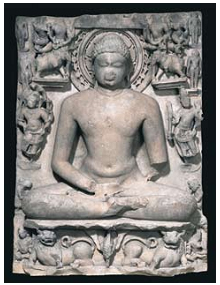
Figure 1: Pañcatīrtha of the Jina Nemi India, Rajasthan or Madhya Pradesh, ca. 800-900 CE Sandstone, 95.3 x 71.1 x 22.9 cm Asian Art Museum of San Francisco The Avery Brundage Collection, B62S26+ Image © Asian Art Museum of San Francisco
Another interesting, large sculpture probably depicts the parents of a Jina (Figure 3). If this is true, they are most likely the parents of Ananta because his cognizance is a ram and two rams are depicted at the base in a rather playful compositionyoung boys seem to be goading them on to butt heads. As is typical of these sculptural panels, the figures of the Jina's parents sit under a tree and a small image of a seated Jina surmounts the grouping. Again a comparison to nature gods, yakṣa and yakṣī, can be made and similar pairings of a mother with her consort are found frequently in Buddhist sculpture.[2] The female figure has a small child in one of her arms, emphasizing her maternal role. Other boys appear below and a playful child climbs up the tree trunk. The inscription dates the sculpture to VS 1334 in the month of Margasirha, corresponding to 1242 CE.
The multiplicity of the Jinas throughout the cosmos is very important in Jainism and Jina images can be seen in many configurations. We find popular groups of three (tritīrtha) or five (pāñcatīrtha) and often the entire group of twenty-four, as depicted in Figure 4. These images underscore the continuity of the tradition and the fact that Jinas are essentially the same. One might expect either Ṛṣabha or Mahāvīra to be the central figure, because they are the first and last of the line and quite popular; but a study of examples of this iconography demonstrates that the central figures can be any one of the Jinas. This configuration is referred to as a Caturviṃśati paṭṭa when sculpted (the term paṭa is used when painted). The three main standing Jinas (an obvious tritīrtha within the group of twenty-four) each have their cognizances (lāñchanas) below them identifying the central figure as Vāsupūjya (number 12) with his buffalo. Vimala (number 13) above a boar is to the left and Dharma (number 15) stands above a thunderbolt to the right. The remaining twenty-one Jinas surround them: nineteen are seated and two stand at the sides. Other elements include auspicious umbrellas over the three main Jinas and attendant figures to the sides of the central figureat the top they ride elephants so they can lustrate the figure and two are at the base. There are also depictions of the nine planets (navagraha)[3] spread on either side of the buffalo lāñchana in the centre, and some figures to the sides of the other two cognizances. The date of its inscription corresponds to 1492 CE (it is dated in one of the hot months in VS 1549). These devotional scultpures were donations, often credited to wealthy patrons. However, this example and many others were donations from monks and nuns, perhaps commemorating specific rituals and events. Here the donor was the monk Jinacandradeva in the lineage of Kundakunda in the Mūla saṃgha.[4] Kundakunda was a very important, early ācārya who lived in the second century CE and Jinacandra (1450-1514) was known to consecrate a large number of images towards the end of the fifteenth century.
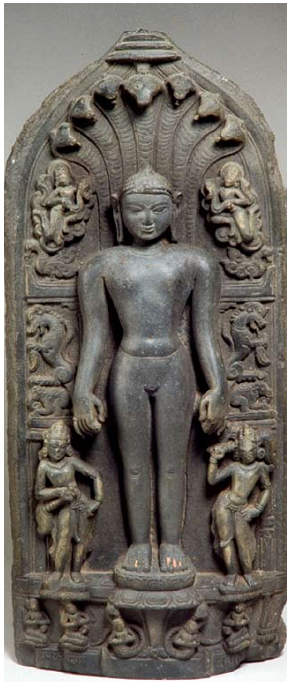
Figure 2: The Jina Pārśva Bangladesh, perhaps Dhaka District Pāla period, ca. 1000-1100 CE Chlorite, 61.0 x 27.9 x 7.6 cm Asian Art Museum of San Francisco The Avery Brundage Collection B63S21+ Image © Asian Art Museum of San Francisco
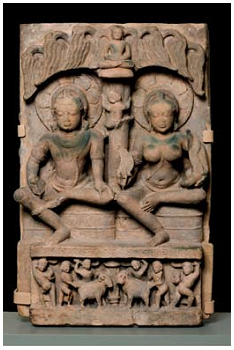
Figure 3: Parents of the Jina Ananta India, Uttar Pradesh, dated corresponding to 1242 CE Sandstone, 66.7 x 44.5 x 12.7 Asian Art Museum of San Francisco The Avery Brundage Collection B70S4 Image © Asian Art Museum of San Francisco
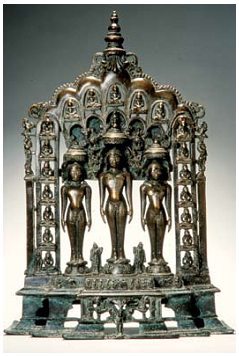
Figure 4: Caturviṃśati-paṭṭa India, Gujarat or Rajasthan, date corresponds to 1492 CE (VS 1549) Copper alloy, 54.6 x 36.8 x 17.1 cm Asian Art Museum of San Francisco Museum purchase, B69B11 Image © Asian Art Museum of San Francisco
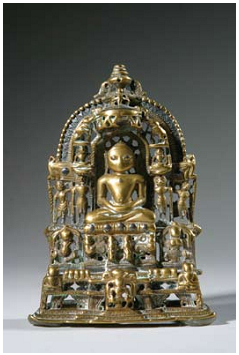
Figure 5: Pañcatīrtha Shrine India, Gujarat, date corresponds to 1512 CE (VS 1569) Copper alloy with inlaid metals, 11.4 x 7.6 x 4.4 cm Asian Art Museum of San Francisco Bequest of Marjorie Walter Bissinger, F2003.33.38 Image © Asian Art Museum of San Francisco
A final, smaller, metal sculpture (Figure 5) is important to illustrate for two reasons: firstly because, although quite worn, it is very elegant and secondly it is a Śvetāmbara image. Many people are under the impression that Jina figures are always nude. The Asian Art Museum has a fair number of Jaina images, but only a few small shrines in the collection are dedications of the Śvetāmbarasthus clothed. Most of the early sculptures of Jinas in the collection are nude and the later ones are clearly of Digambara dedication.
The iconography of these small sculptures is often quite complicated, and this shrine is no exception. In this case it can be called a pañcatīrtha depicting five Jinas, the central one flanked by two standing figures each with a seated figure placed above it. The large Nemi in the collection (Figure 1) also can be called a pañcatīrtha, since there are four standing figures behind the central figure, but the sheer size of the central Jina makes this less obvious. Although a few Jinas have specific features to identify them, such as Ṛṣabha with his long hair and Pārśva and Supārśva with their snake's hoods, this multiplication reinforces the fact that the Jinas are essentially all the same and exist in a continuum. At the same time, the number five connects this image to an important concept in Jainism: the Five Supreme Beings (pañcaparameṣṭhin). The shrine also has nine lumps along the base representing the navagraha, also seen in the Digambara example (Figure 4). It has six attendant figures to the sides including his śāsanadevatā pair -impossible to identify- and another goddess identified as Śantīdevī in the centre of the base. Elephants are to either side of the central figure suggesting lustration, a very important ritual depicted very often in Jaina iconography.
Hopefully, this short discussion illustrating only a few sculptures in the Museum's collection will give a sense not only of the richness of the holdings at the Asian Art Museum of San Francisco, but also of the art produced for the Jainas. On first acquaintance, Jaina sculpture can appear to be deceptively simple concentrating on the repetitious images of the Jinas, figures that do not present much scope for dramatic interpretation. But armed with more understanding of the rich textual traditions of the various sects of Jainism, we can appreciate more fully the complexities of its intricate iconography.
Robert J. Del Bontà has lectured and published on a wide variety of subjects including Jaina art from all over India. He has curated many exhibits at the Asian Art Museum of San Francisco and most recently was a major contributor to The Victorious Ones: Jain Images of Perfection at the Rubin Museum of Art, reviewed in this issue.
Susan Huntington, Leaves from the Bodhi Tree: The Art of Pāla India, Dayton, Ohio: Dayton Art Institute in association with the University of Washington Press, 1990, No.23, p.149.
See Pratapaditya Pal, ed., The Peaceful Liberators, Los Angeles: Los Angeles County Museum of Art, Nos. 58-59, pp. 174-75, on the identity of these sculptures. No. 58 also has the boys with the rams at its base.
The navagraha is a grouping found throughout India. The word graha is always translated as "planet", but in fact the group consists of the sun and moon, five of the known planets: Mercury, Venus, Mars, Jupiter, and Saturn, and two others that can be called "shadow planets" which cause eclipses of the sun and moon.
 Dr. Robert J. Del Bonta
Dr. Robert J. Del Bonta